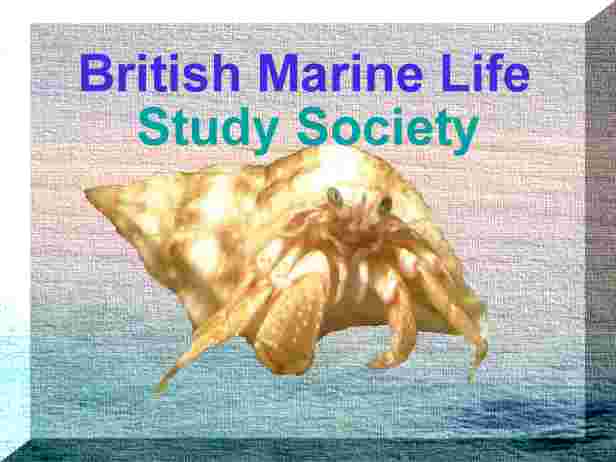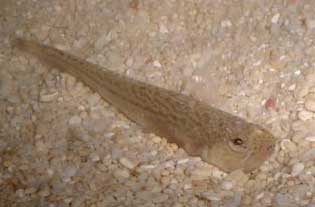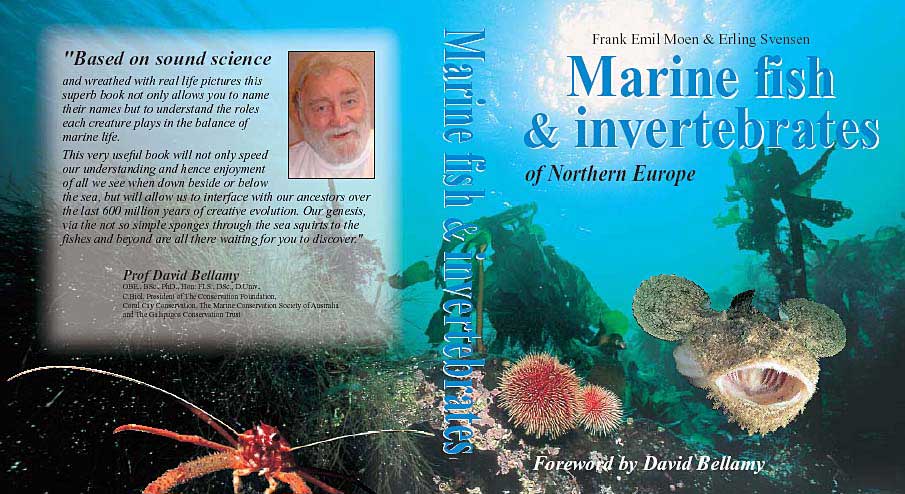 |
 |

|
The bulletin is designed for Microsoft Explorer 4 and above using medium fonts at a resolution of 800 x 600. Subscribe and unsubscribe options are at the foot of this page. |
|
|
| MARINE
LIFE NEWS
Reports
of marine wildlife from all around the British Isles, with pollution incidents
and conservation initiatives as they affect the flora and fauna of the
NE Atlantic Ocean.
28 June 2004 BRITISH
ORNITHOLOGISTS' UNION RECORDS COMMITTEE
An
Audouin's
Gull,
Larus audouinii, was added
to the list of British birds after a second summer bird was seen,
recorded and photographed at Dungeness, Kent on 5-7
May 2003.
Discovery
by Dave Walker (Dungeness
Bird Observatory Warden)
Message
on Sussex Birds
25
June 2004
Humpback Whales (first live record from the Netherlands) BMLSS Cetacea 18
June 2004
17
June 2004
13
June 2004
Report
by Alistair Jack of British
Divers Marine Life Rescue
British
Marine Life Rescue News Page (with the Full Report)
BMLSS Seals 6 June
2004
Report
by Barry Pugh
BMLSS
Jellyfish
5
June 2004
Adur was one of the leaders in the United Kingdom when it presented an Exhibition celebrating the official World Oceans Day. It was held in the large marquee on Coronation Green overlooking the River Adur. I estimated the attendance on a sunny day (21.4° C) at 2,500. With
the sheer number of people it made it impossible to speak to people as
much as I would like. There were lots of interesting conversations and
I was surprised about the number of people who stepped on a Weever
Fish last summer, at least half a dozen, and it was lucky we had
a small specimen on display so people could have a look at the offender.
The most interesting discovery was an unidentified fossil found on Shoreham beach and brought in by a young girl. This is illustrated on the right. Adur World Oceans Day 2004 Image Portfolio (by Ray Hamblett) 4 June
2004
3 June
2004
A short
30 minute spell of push-netting for shrimps
off Shoreham beach on the low spring tide produced
two dozen Brown Shrimps,
Crangon
crangon, a handful of the South-clawed
Hermit Crab, Diogenes pugilator,
one young venomous Lesser Weever,
Echiichthys
vipera,
two juvenile Grey
Swimming Crabs, Liocarcinus
vernalis, with 30+ young Flounders
and two young Sole.
The crab in the photograph with the "fleur-de lis" is Portumnus latipes.
Identification
of the crab (left) by Guido Rappé
(Belgium)
Adur
at Low Tide
Identification of the crab (right) by by Richard Lord (Guernsey) and others on the Marine Wildlife of the North-east Atlantic Ocean Group 2 June 2004 A Sturgeon, Acipenser sp., was caught in an otter trawl in Bristol Channel south of Swansea at 2:30 pm in the small (under 10 metre) fishing vessel MFV Wonkey SA357, skippered by Robert (or Kevin) Davies. It weighed 120 kg (265 lb), and was was 261 cm (8 ft 6") long (including the tail fin) and 246 cm long (excluding the tail). It was caught at a depth of between 10 and 20 metres. I believe it to be Acipenser sturio, but the snout is fairly short and blunt, more like Acipenser gueldenstaedtii (but this is a Danube/Black sea species). Report
from Doug
Herdson (National
Marine Aquarium, Plymouth)
BMLSS
Sturgeon
30-31
May 2004
Links for News Reports: Helford (Cornwall) Marine Conservation Area |
| PICTURE
GALLERY
Each month, at least one special marine image will be published from images sent to the BMLSS. This can be of the seashore, undersea world or any aspect of the marine natural world, especially the underwater life, but not restricted to life beneath the waves. Topical inclusions may be included instead of the most meritorious, and images will be limited to the NE Atlantic Ocean and adjoining seas, marine and seashore species and land and seascapes. -----------------------------------------------------------------------------------------------------------------------------
Shore Topography Series The name of the particular coast should be included and the grid reference, if known. Print photographs can be included in Exhibitions and on the BMLSS Web Sites and electronic publications. Electronic images in *.JPG format can also be considered for the web site. They should not exceed 150K in size. Click
on the album for more links (On-line link)
|
| DIARY
In
chronological order, the most recent events are at the top of the page.
Events open to the public, free or for a nominal charge only are included.
Most Seminars need to be booked in advance.
BIOSIS
Conference Calendar for Zoology
Marine Mania at Seven Sisters Country Park, East Sussex This event occurs on 4 July 2004 and will include live displays of seashore life. These will be presented by Seven Sister's Country Park. Co-ordinator: East Sussex Maritime Season -----------------------------------------
Plymouth Talks Series 2004 Facilities are available for schools, linked to the national curriculum. Talks
start at 7:00 p.m.
Please
reserve your place by calling the Aquarium on 01752 275204
------------------------------------------------------------------------------------------------------------------------
Unless otherwise stated, seminars are held on Fridays at 4:15 pm------------------------------------------------------------------------------------------------------------------------- -------------------------------------------------------------------------------------------------------------------------
|
| PUBLIC
AQUARIA NEWS
|
| Public Aquaria List |
| NEW
PUBLICATIONS & WEB PAGES
FILMS 18
June 2004
---------------------------------------------------------------------------------------------------------------------------
Marine
fish & invertebrates
In May 2004 the English edition of the very popular Norwegian Marine Fauna (Dyreliv I havet) was published. Prof. David Bellamy has written the foreword. More than one thousand underwater photographs and 608 pages with updated information on marine fish and invertebrates from nearly all marine phylum in Northern European waters. The largest newspaper in Norway, Aftenposten gave the Norwegian edition 6 out of 6 points in a book review. It is in use at all major higher marine biology studies in Norway. The
English edition is translated by Prof Fredrik Pleijel and Dr. Sabine Cochrane.
"Marine fish & invertebrates of Northern Europe” is written for anyone with a general interest in marine animal life, and who would like to learn more about their way of life and behaviour, about the role they play in the drama of nature, and the benefit and nuisance they are to man. The main portion of the book is arranged in such a way that the different animal species are presented in a natural, systematic order. More than one thousand magnificent colour photos of animals taken in their natural environment support the informative text highlighting the characteristics of each animal. “Marine fish & invertebrates” covers the North European marine fauna and is a readable experience in itself. In addition, the book is an important aid and source of inspiration to all who delight in the ocean with its hidden life whether if be hobby, study or profession. The book is available from Aquapress in the UK, Skandisk, Inc. USA and KOM in Norway . .
WEB SITES NAUSICAÄ
- French National Sea Experience Center
NAUSICAÄ - French National Sea Experience Center, in Boulogne-sur-Mer (Northern France), is a Science Center entirely dedicated to the relationship between Mankind and the Sea. Its goal is to incite the general public to discover the sea and to love it, while raising its awareness on the need for a better management of marine resources. Within the scope of this mission, NAUSICAÄ gives access, on its recently redesigned web site, to a database containing links to the most interesting web sites concerning the sea-related topics and marine activities. -------------------------------------------------------------------------------------------------------------------- MOLLUSC WORLD |
SOCIETY
INFORMATION
The British Marine Life Study Society are responsible for producing the journal GLAUCUS, which is the first publication exploring the marine life of the seas surrounding the British Isles available to the general public.
the TORPEDO Electronic News Bulletin. The Glaucus 2002 CD-ROM was sent out to Premier BMLSS members in January 2003.
Messages to the first address will not receive any guarantee of a reply and from year 2003, the old EMail address is expected to fall into disuse. ---------------------------------------------------------------------------------------------------------------------------- Membership 2004
|
|
If
you receive this Bulletin direct from the British Marine Life Study Society
it will contain only hypertext and image (*.htm *.gif & *.jpg) files.
|
|
These
pages are not designed for the default settings on the Page Set-ups of
your browser. I recommend viewing in Microscope Internet Explorer 6 and
altering the right and left hand columns in the Page Set-up menu to 9 mm
(from 19 mm).
Some of the images may not display if you have changed your directory for downloaded files. The images may also not display properly if your settings on your EMail software do not allow you do this automatically. When received in Pegasus the format is changed slightly, but the bulletin is still readable. Torpedo compiled by Andy Horton Background design by Nicolas Jouault , Andy Horton and other contributors 1 July 2004 |
Compiled on Netscape Composer 4.7 and other programs



















